Available 24/7
Available 24/7
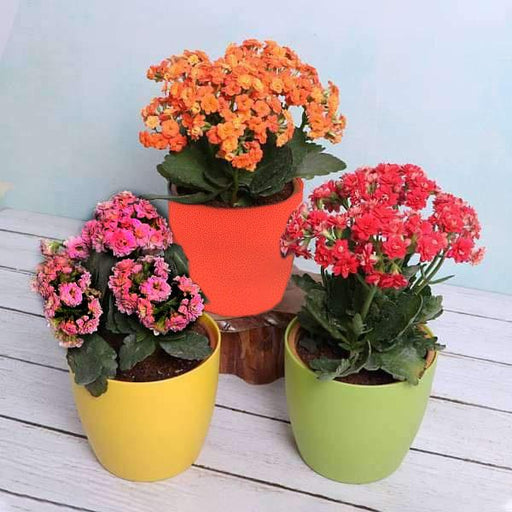
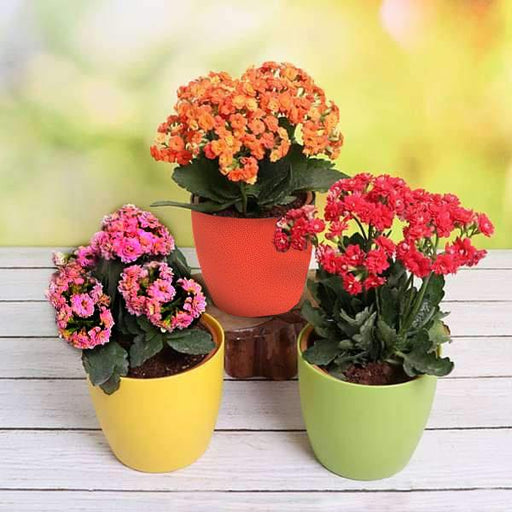 Save 10%
Save 10%
DescriptionThe Kalanchoes are thick leaved elegant flowering succulent houseplants. Make your home garden more vibrant and full of colors by bringi...
View full details Save 18%
Save 18%
DescriptionThis pack contains two 60 cm Spiral Stick Lucky Bamboo Plant + Glass vase + 250g white chip pebbels + 250g black chip pebbels.About Luc...
View full details

DescriptionIf the juvenile foliage along with a more compact plant is preferred, cut off all the climbing stems that develop, this will keep it bus...
View full details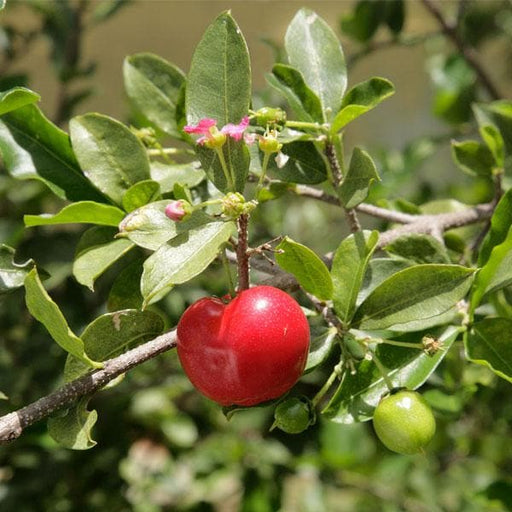 Save 15%
Save 15%
DescriptionGrowing Barbados Cherry is an easy way to add a tropical flair to your garden. When you know its important and how to care for Barbados ...
View full details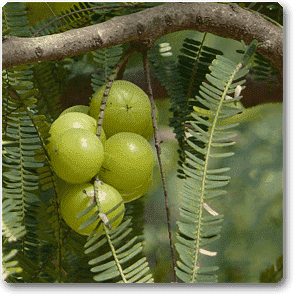 Save 17%
Save 17%
DescriptionImprove immunity of your all family member by growing a nutritious and vitamin rich an amazing Amla plant. Amla is a small to the medium...
View full details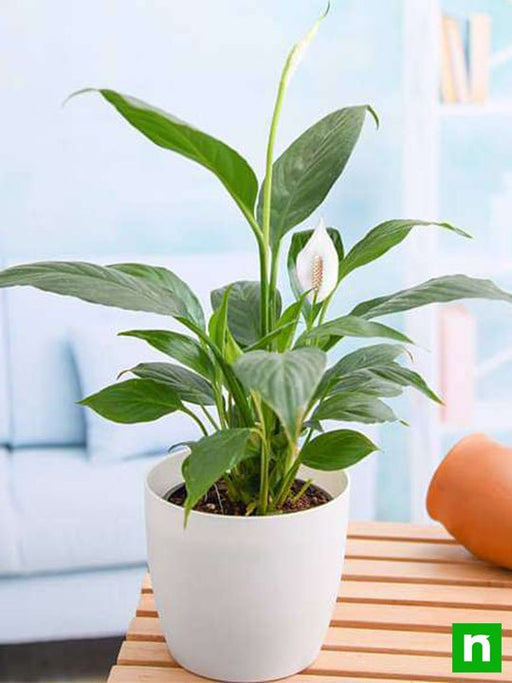
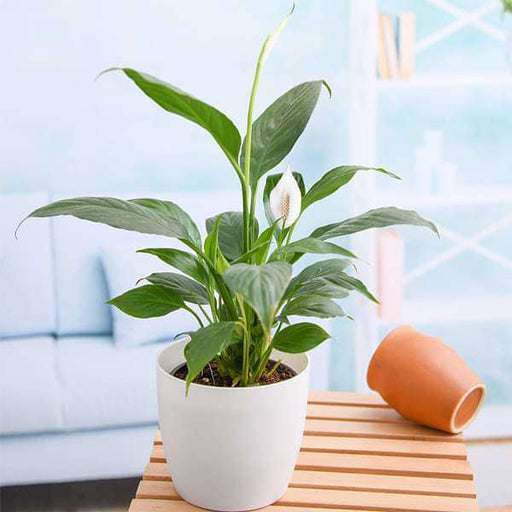 Save up to 15%
Save up to 15%
DescriptionPeace Lily Plant is a very popular and very rare indoor flowering houseplant. It is also an excellent air purifier plant.What makes it s...
View full details
 Save 20%
Save 20%
DescriptionFlowers make intimate connections they increase our connectivity with family and friends. Mogra plant is famously known as Jasmine flowe...
View full details
 Save 10%
Save 10%
DescriptionThe Kalanchoes are thick leaved elegant flowering succulent houseplants. Make your home garden more vibrant and full of colors by bringi...
View full details Save 45%
Save 45%
Description Pack of 4 succulents that are very easy to care for. A perfect pack to start growing plants worry-free. About You get 4 succulent plant...
View full details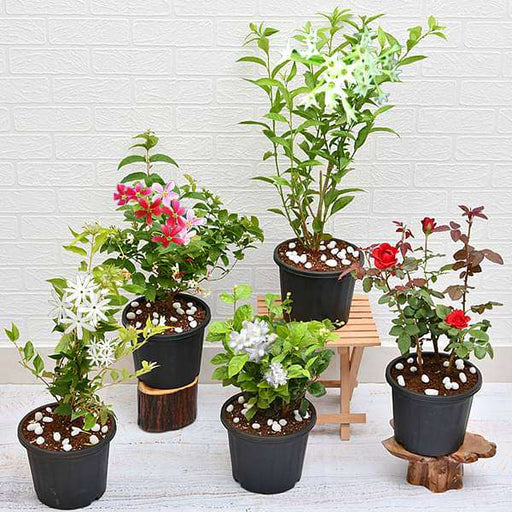 Save 12%
Save 12%
DescriptionAromatic plants bring into a room or house an often overlooked benefit. These plants have a pleasant scent.About You plant a hope when ...
View full details
 Save up to 50%
Save up to 50%
DescriptionIf you long for indoor greenery but have not succeeded with houseplants, consider these beautiful succulents. A perfect pack to start gr...
View full details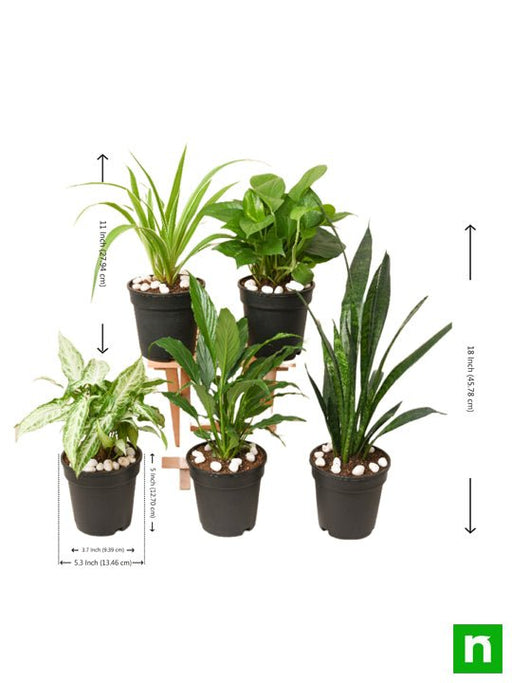
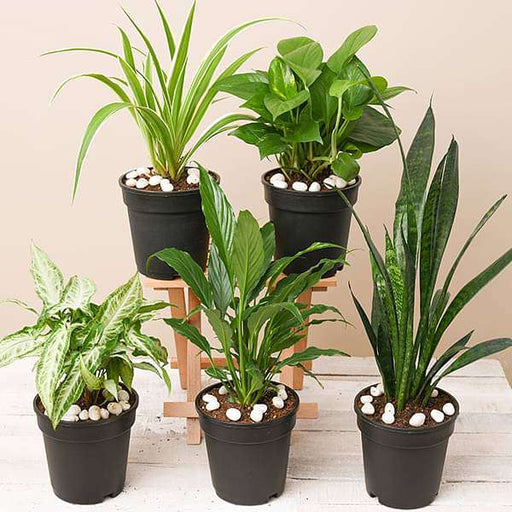 Save 21%
Save 21%
DescriptionThis plants pack contains amazing 5 houseplants + 5 Pots. Surround your home with these best pollution killer plants for a clean and hea...
View full details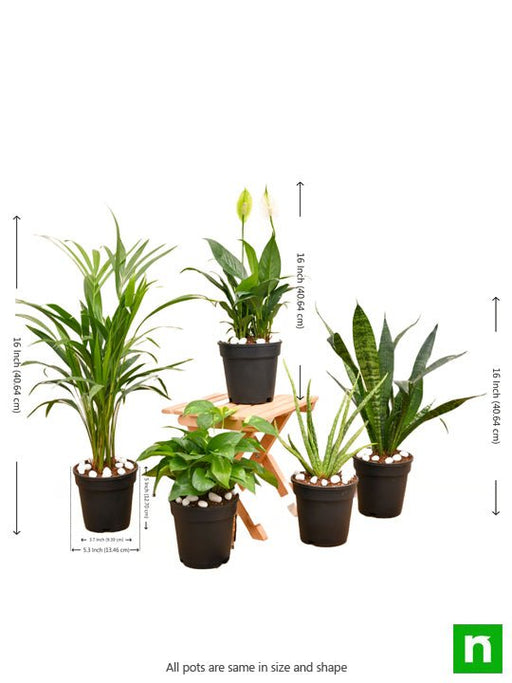
 Save 20%
Save 20%
DescriptionIf you or anyone from your family wants to breathe fresh air, cleaner air in their homes, this 5 plants pack purify the air around and r...
View full details
 Save 40%
Save 40%
DescriptionSet of 2 Bonsai Looking Grafted Adenium PlantsAbout You get 2 Bonsai looking hardy grafted Adenium plants in a single pack.Plants are k...
View full detailsHow to take care of hedging Plants?
Hedging plants don’t require too much water. Water them only when you see the soil is dry. And these plants grow well only in the soil. Make sure that the soil has good drainage. Also, it is advisable to plant them where they receive a good share of indirect sunlight.
Buy Hedging Plants from NurseryLive
NurseryLive is the best website to buy a huge variety of plants. These plants can beautify and transform your space like never before. On this website, you can choose plants as per your requirement and at never before seen prices. So, get your favourite hedging plants and create your green corner.
Evergreen plants are a popular choice for hedges because they provide year-round privacy and screening. In this article, we'll explore some of the best evergreen plants for hedges and offer tips for growing them successfully.
If you want to create a hedge quickly, fast-growing plants are a good choice. In this article, we'll explore some of the best fast-growing plants for hedges and offer tips for growing them successfully.
Flowering plants can add color and interest to your hedge, as well as attracting pollinators. In this article, we'll explore some of the best flowering plants for hedges and offer tips for growing them successfully.
If you want a hedge that requires minimal care, low-maintenance plants are the way to go. In this article, we'll explore some of the best low-maintenance plants for hedges and offer tips for growing them successfully.
If you want a hedge that provides maximum privacy and screening, tall plants are a good choice. In this article, we'll explore some of the best tall plants for hedges and offer tips for growing them successfully.
If your hedge will be in full sun, it's important to choose plants that can tolerate these conditions. In this article, we'll explore some of the best hedge plants for full sun and offer tips for growing them successfully.
If your hedge will be in partial shade, it's important to choose plants that can tolerate these conditions. In this article, we'll explore some of the best hedge plants for partial shade and offer tips for growing them successfully.
If you have clay soil, it's important to choose plants that can tolerate these conditions. In this article, we'll explore some of the best hedge plants for clay soil and offer tips for growing them successfully.
If you have sandy soil, it's important to choose plants that can tolerate these conditions. In this article, we'll explore some of the best hedge plants for sandy soil and offer tips for growing them successfully.
If you have moist soil, it's important to choose plants that can tolerate these conditions. In this article, we'll explore some of the best hedge plants for moist soil and offer tips for growing them successfully.
If you have dry soil, it's important to choose plants that can tolerate these conditions. In this article, we'll explore some of the best hedge plants for dry soil and offer tips for growing them successfully.
If your hedge will be in a windy area, it's important to choose plants that can tolerate these conditions. In this article, we'll explore some of the best hedge plants for windy areas and offer tips for growing them successfully.
If your hedge will be in a coastal area, it's important to choose plants that can tolerate salt spray and other coastal conditions. In this article, we'll explore some of the best hedge plants for coastal areas and offer tips for growing them successfully.
If you have a small garden, it's important to choose plants that won't outgrow the space. In this article, we'll explore some of the best hedge plants for small gardens and offer tips for growing them successfully.
Hedges can provide habitat and food for wildlife, such as birds and insects. In this article, we'll explore some of the best hedge plants for creating a wildlife habitat and offer tips for growing them successfully.
Formal gardens often feature hedges that are clipped into precise shapes and sizes. In this article, we'll explore some of the best hedge plants for formal gardens and offer tips for growing them successfully.
If you want a hedge that has a more natural, relaxed appearance, informal hedge plants are a good choice. In this article, we'll explore some of the best hedge plants for informal gardens and offer tips for growing them successfully.
Hedges can provide visual interest during the winter months, even when other plants have gone dormant. In this article, we'll explore some of the best hedge plants for winter interest and offer tips for growing them successfully.
Some hedge plants have fragrant flowers or foliage that can add a pleasant scent to your garden. In this article, we'll explore some of the best hedge plants for fragrance and offer tips for growing them successfully.
Hedges are often used for privacy and screening, so it's important to choose plants that are dense and can grow tall enough to provide the desired level of screening. In this article, we'll explore some of the best hedge plants for screening and offer tips for growing them successfully.
Some of the best plants for creating a low hedge include boxwood, dwarf yaupon holly, and dwarf English lavender.
Some of the best plants for creating a tall hedge include Leyland cypress, arborvitae, and privet.
The spacing between plants will depend on the specific plant and its growth habits. As a general rule, space plants close enough together so that they will eventually grow together to form a continuous hedge.
Regular pruning is important to keep your hedge looking neat and tidy. Depending on the specific plant, you may need to prune once or twice a year.
When choosing plants for your hedge, consider factors such as sun exposure, soil type, and desired height and appearance.
Yes, you can grow a hedge in a container, but it's important to choose the right plant and container size. Be sure to also provide adequate water and fertilizer.
Yes, you can grow a hedge from seeds, but it will take longer to establish than using mature plants.
Yes, you can mix different types of plants in your hedge, but be sure to choose plants that have similar growth habits and requirements.
The time it takes for a hedge to reach full height will depend on the specific plant and growing conditions. Some hedges may take a few years to reach full height, while others may take a decade or more.
Regular inspection and prompt treatment of any pests or diseases is important to keep your hedge healthy. Providing adequate water and fertilizer can also help prevent stress that can make plants more susceptible to pests and diseases.
Yes, there are plants that can tolerate shade and can be used to create a hedge. Some examples include boxwood, yew, and Japanese holly.
Yes, there are plants that can tolerate wet soil and can be used to create a hedge. Some examples include bald cypress, river birch, and winterberry holly.
Yes, there are plants that can tolerate dry soil and can be used to create a hedge. Some examples include juniper, lavender, and rosemary.
The watering requirements for your hedge will depend on the specific plant and growing conditions. As a general rule, water deeply once a week during dry periods.
Yes, you can grow a hedge on a slope, but it's important to choose plants that can tolerate the slope and to take steps to prevent erosion.
Regular pruning and maintenance is important to keep your hedge from becoming too wide.
To create a hedge from cuttings, take a 6-inch cutting from a mature plant and remove the lower leaves. Dip the cut end in rooting hormone and plant in well-draining soil. Keep the soil moist and provide adequate light.
To create a hedge from layering, bend a low branch of a mature plant to the ground and cover with soil. The branch will eventually root and can be separated from the parent plant to create a new plant.
Yes, you can prune your hedge into a specific shape using hedge shears or clippers. Just be sure to prune during the appropriate time of year for your specific plant.
Yes, hedges are often used as a living fence to provide privacy and screening.
The height of your hedge will depend on your specific needs and the purpose of the hedge. Consider factors such as privacy and screening, as well as the height of nearby structures and trees.
Yes, there are plants that can tolerate windy conditions and can be used to create a hedge. Some examples include juniper, arborvitae, and cedar.
Regular pruning and maintenance is important to keep your hedge from becoming too tall.
Regular pruning and maintenance is important to keep your hedge from becoming too thin. Adequate water and fertilizer can also help promote healthy growth.
Regular pruning and maintenance is important to keep your hedge from becoming too bushy. Be sure to prune during the appropriate time of year for your specific plant.
Yes, there are plants that can be grown indoors and can be used to create a small hedge or screen. Some examples include English ivy, snake plant, and dwarf schefflera.
Regular pruning and maintenance is important to keep your hedge from becoming too wide at the base. Be sure to prune during the appropriate time of year for your specific plant.
Yes, there are plants that can be grown in containers and can be used to create a small hedge on a balcony or terrace. Some examples include boxwood, dwarf holly, and rosemary.
The spacing between plants will depend on the specific plant and its growth habits. As a general rule, space plants close enough together so that they will eventually grow together to form a continuous hedge.
The fertilization requirements for your hedge will depend on the specific plant and growing conditions. As a general rule, fertilize in the spring and again in the fall with a balanced fertilizer. Be sure to follow the manufacturer's instructions for application rates.